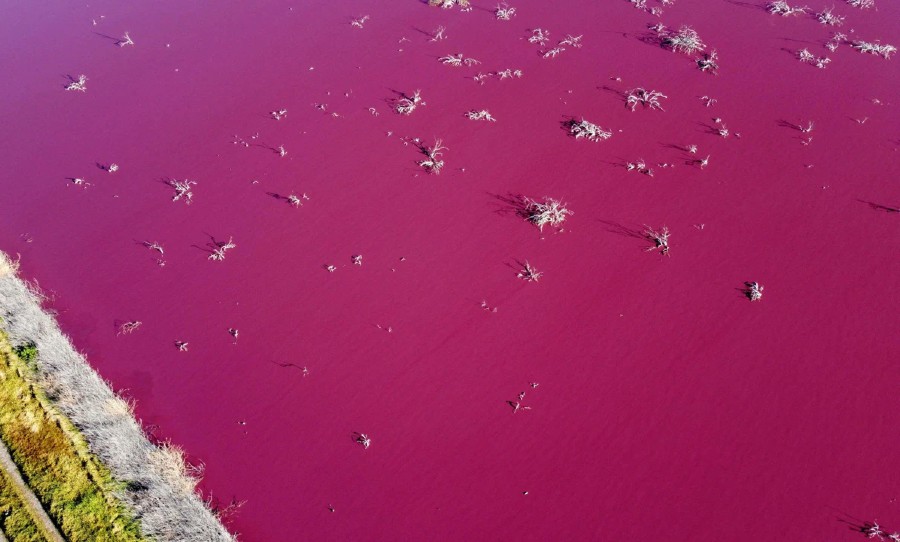A lagoon in Argentina’s southern Patagonia region turned hot pink earlier this month, and locals are growing concerned.
Australia is famous for the stunning pink lakes and lagoons of WA and SA.
But where Australia’s Lake Hiller is a natural beauty, the striking hue of the Corfo lagoon in Argentina results from severe pollution from local fish factories.

The nearby factories use sodium sulphate, an antibacterial agent, to preserve prawns for export.
This month, the agent contaminated the Chubut river, which leads to the lagoon and other nearby water sources.
The lagoon, with an area between 10 and 15 hectares, is not used for recreation. It is located in the Industrial Park of Trelew, of the Chubut province, and is approximately 1,400km from Buenos Aires.
Experts say pollution from a chemical used to preserve prawns for export purposes may have changed this Argentinian lagoon’s color to bright pink. pic.twitter.com/doGMeE9U6d
— DW News (@dwnews) July 26, 2021
Residents are distraught by the foul smells of pollution in the area, and say the lagoon has previously turned pink from waste.
Environmental control chief for the province, Juan Micheloud, told AFP: “The reddish color does not cause damage and will disappear in a few days“.
Locals are taking a stand against the continued and devastating pollution of Chubut water sources.
Recently, residents of Rawson, neighbouring Trelew, blocked the roads used to transport fish waste from the factory.
“We get dozens of trucks daily, the residents are getting tired of it,” said environmental activist Pablo Lada, speaking to AFP. “Those who should be in control are the ones who authorize the poisoning of people“, he added.
There is tension between environmental activists’ frustrations and the local economy’s reliance on the fish factories.
The plants which process fish for shipping generate thousands of jobs within the Chubut province, home to over 600,000 people.
Addressing this tension, Lada stated: “Fish processing generates work… it’s true. But these are multi-million-dollar profit companies that don’t want to pay freight to take the waste to a treatment plant that already exists in Puerto Madryn, 35 miles away, or build a plant closer“.
Una laguna se tiñó de rosa por los desechos industriales
👉 Está ubicada en cercanías del parque industrial de Trelew, en Chubut pic.twitter.com/9JjtMg64UI
— Santi Peretti (@SantiagoPeretti) July 23, 2021



